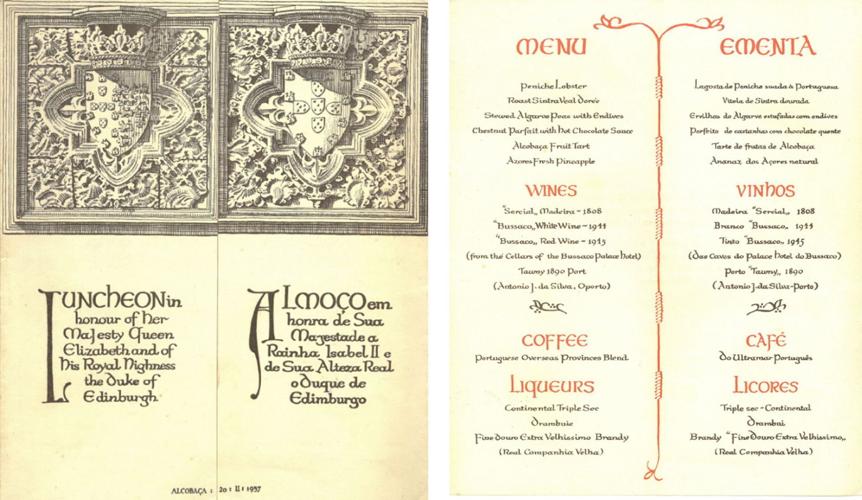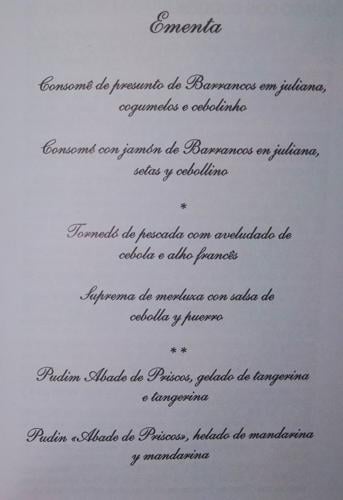
Kamilla Isalieva
By Stephen Beech
Food has been used as a diplomatic "tool" to make and break political alliances for over a century, reveals a new study.
Researchers examined menus from diplomatic dinners dating from 1910 to 2023 and showed that meals can play a "significant" role in a country’s foreign policy.
They say food brings people together, and it serves as a tool to communicate political stances, to cultivate cross-cultural comprehension or, if necessary, create tensions.
The Portuguese research team analyzed menus from diplomatic dinners, state banquets, and receptions hosted over 103 years to find out how meals reflected and shaped Portugal's foreign policy and geopolitics.
Study first author Óscar Cabral said: “Those meals play a significant role as diplomatic institutions in the execution and continuity of Portuguese foreign policy.
“They demonstrate how culinary and gastronomic practices have facilitated diplomatic negotiations and provided opportunities for cultural exchange, political messaging, and the conveyance of Portuguese culture.
“Menus can be intentionally designed to convey political messages and communicate non-gastronomic aspects.

Menu of the Luncheon in honour of her Majesty Queen Elizabeth II and his Royal Highness the Duke of Edinburgh held in Alcobaça (Portugal) on February 20th, 1957. (Cabral et al., 2025 via SWNS)
“For example, the COP25 meal in Madrid used dish names like ‘Warm seas. Eating imbalance’ and ‘Urgent. Minimise animal protein’ to draw attention to climate issues.”
But he said using food in such a way is not a new idea.
For the study, published in the journal Frontiers in Political Sciences, the research team analysed menus from 457 diplomatic meals dating between 1910 and 2023.
While a clearly structured culinary diplomatic strategy or public policy could not be identified, they found certain historical periods showed distinct characteristics.
During the first half of the 20th Century, lavish nine or 10-course meals featuring French cuisine were the norm.
The introduction of Portuguese products happened gradually over the second half of the 20th Century.
A turning point occurred during the dictatorial Estado Novo period, which lasted from 1950 to 1961/62.
Cabral, a gastronomic sciences researcher at the Basque Culinary Centre, said: “We see a fundamental shift towards the inclusion and promotion of Portuguese products, territory, and culinary regionalism.

Official dinner menu served to Felipe VI of Spain by the President of the Republic, Marcelo Rebelo de Sousa, in November 2016 at Paço dos Duques de Bragança (Guimarães). (Cabral et al., 2025 via SWNS)
"During this time, meals were designed to reflect an emerging gastronationalism, that is the use of food to promote national identity.
“This crystallised in the 1957 ‘regional lunch’ for Queen Elizabeth II, which was designed to convey a sense of territory and ‘Portugality.’”
Dishes included lobster and fruit tarts from the Portuguese cities of Peniche and Alcobaça.
During the 1960s and 1970s, diplomatic meals increasingly featured rare ingredients, such as the turtle soup served to Prince Philip, the Duke of Edinburgh in 1973, or trout from the Azores served to the American and French presidents in 1971.
However, around the same time, typically Portuguese products may have been included because sourcing more exclusive alternatives was difficult during times of economic and energy crises, which in Portugal lasted beyond the 1970s.
Doctoral candidate Cabral says another shift on menus occurred when Portugal’s former colonies gained their independence.
He said the understanding of what Portuguese cuisine was shifted. For example, coffee was simply referred to as such, without an indication of its country of origin – and colonial language was removed.
Five functions of diplomatic meals were identified, according to the findings published in the journal Frontiers in Political Science.
Tactical meals often relate to territory transfers; geopolitical meals aim at renewing and confirming alliances.
Economic diplomacy meals intend to foster commercial and financial relations.

(Wikimedia Commons)
Scientific, cultural, and developmental cooperation meals may be hosted to show common interests.
Cultural proximity meals can be a tool to strengthen cultural ties to specific countries, for example, Portuguese-speaking countries across the world.
Cabral said: “When strengthening these ties, menus intentionally feature products closely tied to a shared national gastronomy, like Cozido à Portuguesa (Portuguese stew) or codfish recipes.”
He explained that integrating gastronomy – alongside Portuguese language, values, and traditions – into national institutions’ strategic work is necessary to shape the world’s understanding of Portuguese culture.
Cabral said: “Our study illustrates how national cuisines can be strategically used to strengthen a country’s global standing."
But he said it is limited by the availability of archival materials from specific historical periods.
Cabral says further research should also aim to understand seemingly contradictory menu choices, such as roast beef being served to the Indian president in 1990.
He added: “Another dish that stands out is the Consommé de presunto de Barrancos, a thin soup made of cured ham from Barrancos, served to King Felipe VI of Spain in 2016.
"It presents a cultural and gastronomic identity challenge.
"It’s a hybrid dish – a French-style soup using a classic French cut but featuring a key Portuguese product, Barrancos ham – one that was served to the monarch of a nation famously known as the country of cured ham.
“One can read it as a gastronomic funny challenge."
























(0) comments
Welcome to the discussion.
Log In
Keep it Clean. Please avoid obscene, vulgar, lewd, racist or sexually-oriented language.
PLEASE TURN OFF YOUR CAPS LOCK.
Don't Threaten. Threats of harming another person will not be tolerated.
Be Truthful. Don't knowingly lie about anyone or anything.
Be Nice. No racism, sexism or any sort of -ism that is degrading to another person.
Be Proactive. Use the 'Report' link on each comment to let us know of abusive posts.
Share with Us. We'd love to hear eyewitness accounts, the history behind an article.